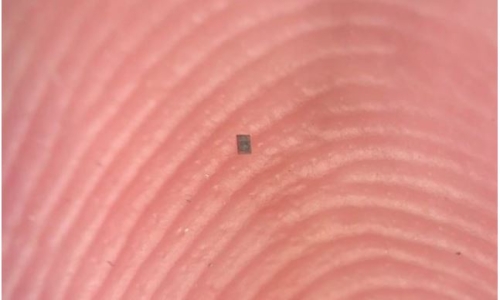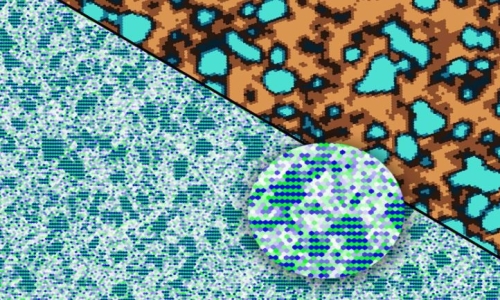


 12:31:51
12:31:51  2024-11-03
2024-11-03  860
860

US researchers have found an astonishingly simple brain circuit of just three types of neurons controls chewing motions in mice, and has a surprising impact on their appetite too.
"It's surprising that these neurons are so keyed to motor control," says Rockefeller University neuroscientist Christin Kosse.
"We didn't expect that limiting physical jaw motion could act as a kind of appetite suppressant."
Damage to the ventromedial hypothalamus brain region was already known to cause obesity in humans, so Kosse and colleagues took a closer look at the neurons in this part of the brain in mice. Previous studies had shown disruptions to their expression of a protein called brain-derived neurotrophic factor (BDNF) was linked with metabolism, overeating, and obesity.
The researchers used a process called optogenetics to activate the BDNF neurons in some of the mice, causing the rodents to lose virtually all interest in food. Their disinterest held fast whether they were full or hungry. They even ignored the temptation of a fatty, sugary treat, equivalent to a scrumptious chocolate cake.
"This was initially a perplexing finding, because prior studies have suggested that this 'hedonic' drive to eat for pleasure is quite different from the hunger drive, which is an attempt to suppress the negative feeling, or negative valence, associated with hunger by eating," explains Kosse. "We demonstrated that activating BDNF neurons can suppress both drives."
This suggests BDNF neurons occupy a place further down the pathway of decision-makers, between chewing and not chewing.
In contrast, inhibiting the BDNF neural circuit in mice drastically increased their compulsion to move their jaw and gnaw at everything, including indigestible things like their water bottle and monitoring equipment. What's more, when food was available they consumed 1,200 percent more of it than normal in a set amount of time.
In line with previous findings on the potential role of BDNF in eating, the findings suggest these neurons and the chemicals they produce usually suppress appetite unless other body signals, like our hunger, tell them not to.
Kosse and team found BDNF neurons receive input on the state of our insides from sensory neurons, including a variety known to create the feeling of hunger. Leptin is one of the key signal molecules used here, which is also known for its involvement in hunger and obesity.
The BDNF neurons then regulate the pMe5 motor neurons that make our jaws chew, depending on that sensory information.
"Other studies have shown that when you kill Me5 neurons in mice during development, the animals will because they're unable to chew solid foods," says Kosse. "So it makes sense that when we manipulate the BDNF neurons projecting there, we see jaw movements."
Isolating BDNF neurons from the 'chewing' motor neurons caused the mice to chew even in the absence of anything to bite onto. So BDNF neurons subdue chewing activity that's actually set to on by default.
This is why damage to the brain region where BDM neurons lie in humans can lead to excess eating.
"The evidence presented in our paper shows that the obesity associated with these lesions is a result of a loss of these BDNF neurons, and the findings unify the known mutations that cause obesity into a relatively coherent circuit," explains Rockefeller University molecular geneticist Jeffrey Friedman.
The simplicity of this circuit surprised researchers because it is on par with those behind reflex behaviors like coughing, whereas eating was thought to be a far more complicated process. But that part of the brain is also involved in other automatic behaviors too, like fear and regulation of body heat.
"What this paper shows is that the line between behavior and reflex is probably more blurred than we thought," concludes Friedman.
Reality Of Islam |
|

A tiny robo

By applying

Stanford, C

A new study
 9:3:43
9:3:43
 2018-11-05
2018-11-05
10 benefits of Marriage in Islam
 7:5:22
7:5:22
 2019-04-08
2019-04-08
benefits of reciting surat yunus, hud &
 9:45:7
9:45:7
 2018-12-24
2018-12-24
advantages & disadvantages of divorce
 11:35:12
11:35:12
 2018-06-10
2018-06-10
 6:0:51
6:0:51
 2018-10-16
2018-10-16
 3:42:22
3:42:22
 2021-12-24
2021-12-24
 2:34:48
2:34:48
 2022-01-18
2022-01-18
 5:57:34
5:57:34
 2023-03-18
2023-03-18
 7:59:14
7:59:14
 2018-06-21
2018-06-21
 10:47:11
10:47:11
 2022-11-22
2022-11-22
 6:28:21
6:28:21
 2022-12-20
2022-12-20
 7:34:7
7:34:7
 2023-02-28
2023-02-28
 5:41:46
5:41:46
 2023-03-18
2023-03-18
| LATEST |